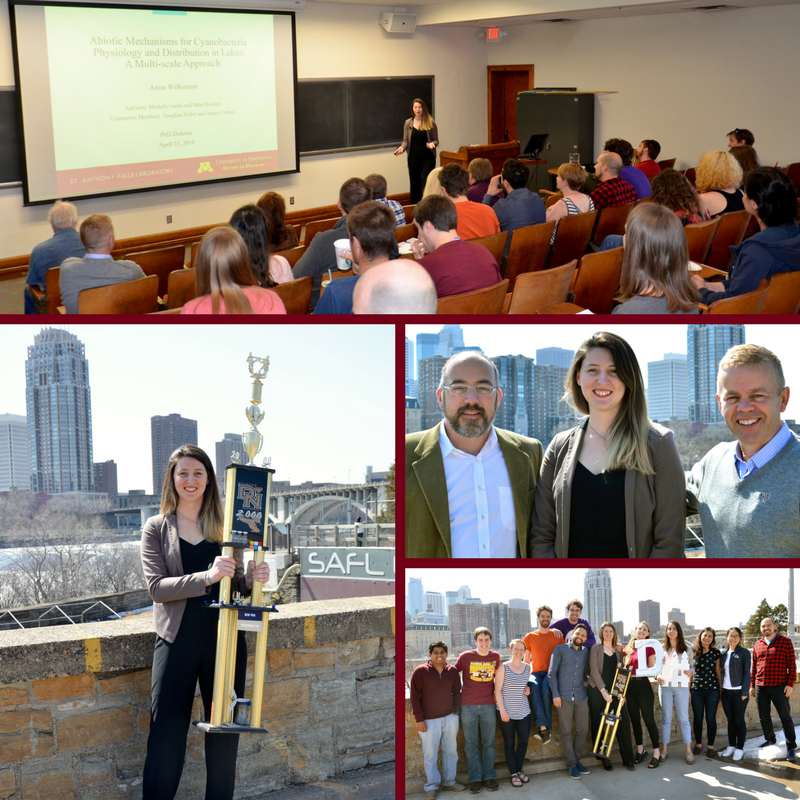Anne Wilkinson Defends PhD - "Abiotic Mechanisms for Cyanobacteria Physiology and Distribution in Lakes: A Multi-Scale Approach"

Ph.D candidate Anne Wilkinson successfully defended her Ph.D in Civil, Environmental, and Geo-Engineering on April 23rd, 2018. She is advised by Professors Michele Guala and Miki Hondzo of the St. Anthony Falls Laboratory and Department of Civil, Environmental, and Geo-Engineering at the University of Minnesota. Congratulations Dr. Wilkinson!
Abiotic Mechanisms for Cyanobacteria Physiology and Distribution in Lakes: A Multi-Scale Approach
Anne Wilkinson, PhD Candidate in Civil, Environmental, and Geo-Engineering
Advisors: Michele Guala and Miki Hondzo, Department of Civil, Environmental and Geo-Engineering and St. Anthony Falls Laboratory, University of Minnesota
Harmful Algal Blooms (HABs) are a ubiquitous ecological and public health hazard because they are comprised of potentially toxic freshwater microorganisms, called cyanobacteria. Cyanobacteria are capable of accumulating in large concentrations in fresh-water ecosystems during summer and producing a toxin (microcystin) that in high concentrations can be harmful to humans and animals. The occurrences of toxic HABs are highly spatially and temporarily variable in freshwater ecosystems making them difficult to predict. These HABs can be governed by abiotic environmental conditions including water temperature structure, light, nutrient abundance, and mixing. This dissertation increases the understanding the effect of abiotic environmental conditions, i.e. different mixing scales, on the physiology and distribution of cyanobacteria in nutrient invariant eutrophic systems using field and laboratory studies. Our objective was to: 1) determine the effect of small scale turbulence on Microcystis physiology and 2) describe the distributions of cyanobacteria biovolume (BV) and microcystin concentrations (MC) using easily measurable physical lake parameters. This presentation will show the importance of understanding physical lake conditions to fully resolve HAB dynamics and to direct future HAB sampling efforts.
